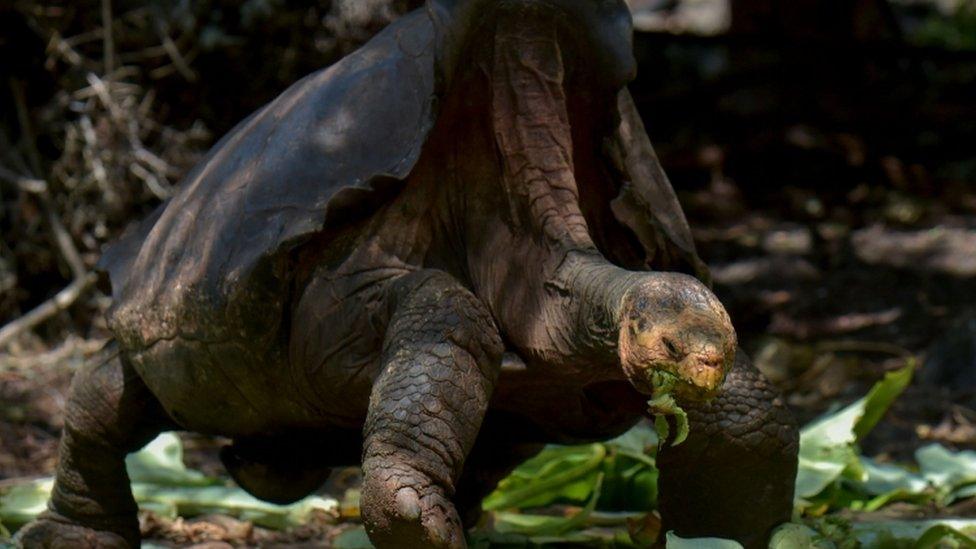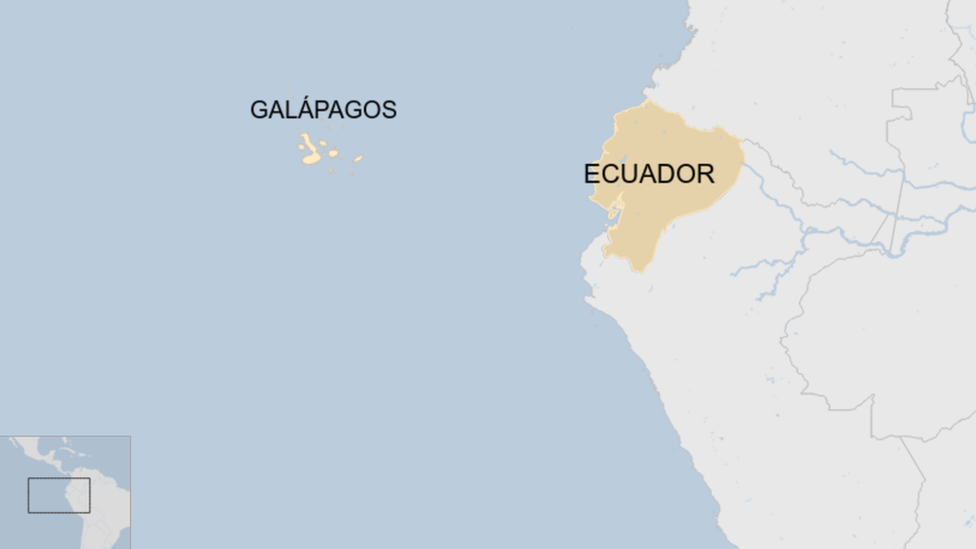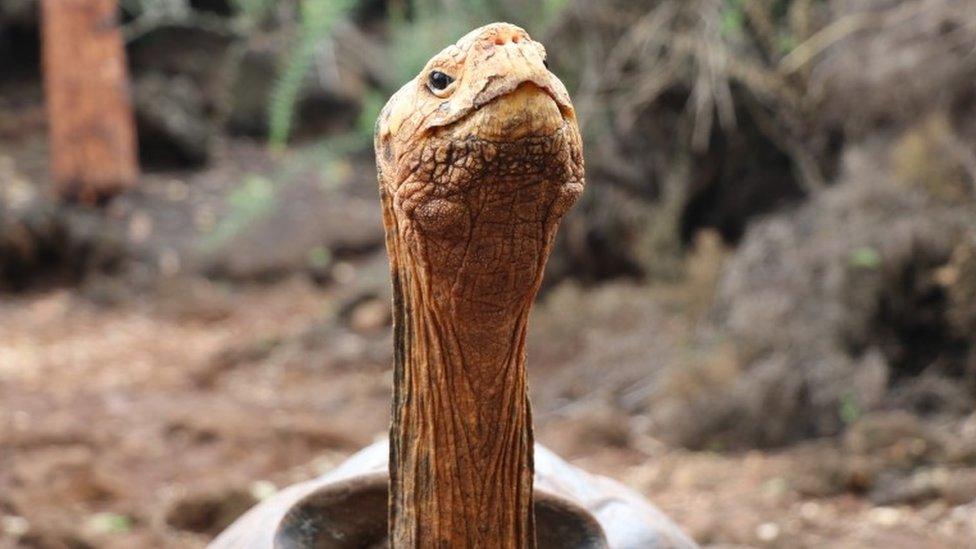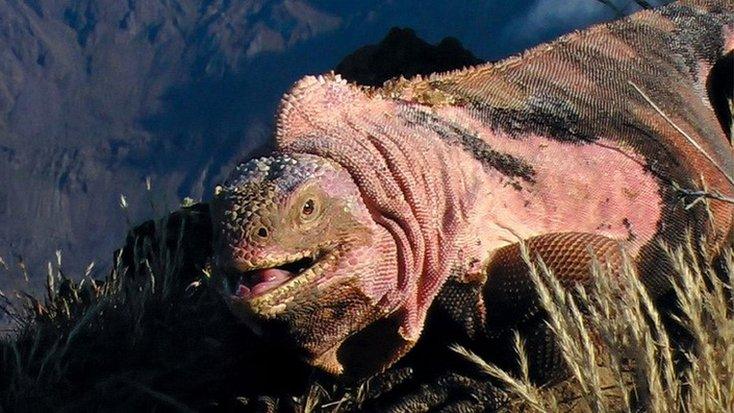Diego, the Galápagos tortoise with a species-saving sex drive, retires
- Published
The tortoise that has saved his species from extinction
A giant Galápagos tortoise whose legendary libido has been credited with saving his species from extinction has officially entered retirement.
Diego and 14 other male tortoises have returned to their native Española, one of Ecuador's Galápagos islands.
The tortoises were put out to pasture on Monday after decades of breeding in captivity on Santa Cruz Island.
The breeding programme was a success, producing more than 2,000 giant tortoises since it began in the 1960s.
Diego, aged 100, is thought to have fathered hundreds of progeny, around 40% of the 2,000 giant tortoises alive today by some estimates.
Ecuador's environment minister, Paulo Proaño Andrade, said the breeding programme was "closing an important chapter" in its history.
Allow X content?
This article contains content provided by X. We ask for your permission before anything is loaded, as they may be using cookies and other technologies. You may want to read X’s cookie policy, external and privacy policy, external before accepting. To view this content choose ‘accept and continue’.

Diego and the other tortoises were returning home after "saving their species from extinction", the minister wrote on Twitter, adding Española welcomed them "with open arms".
The tortoises had to be placed in quarantine before they could return to Española, an uninhabited island considered one of the oldest parts of the Galápagos.
This was to prevent them from carrying seeds from plants that are not native to the island.
Around 50 years ago, there were only two males and 12 females of Diego's species alive on Española.
To save his species, Chelonoidis hoodensis, Diego was brought in from California's San Diego Zoo to take part in a breeding programme.
The Galápagos National Parks service (PNG) believes Diego was taken from his native Española in the early 20th Century by a scientific expedition.
The tortoise weighs about 80kg (175lb), is nearly 90cm (35in) long and 1.5m (5ft) tall at full stretch.

Diego is said to have fathered hundreds of giant tortoises
The Galápagos Islands, 906km (563 miles) west of continental Ecuador, are a Unesco World Heritage site renowned worldwide for their unique array of plants and wildlife.
The indigenous species found on the Galápagos, including iguanas and tortoises, played a key role in the development of Charles Darwin's Theory of Evolution.
Tourists across the globe travel there to see its biodiversity.

Related topics
- Published11 January 2020

- Published15 September 2016

- Published28 December 2018
